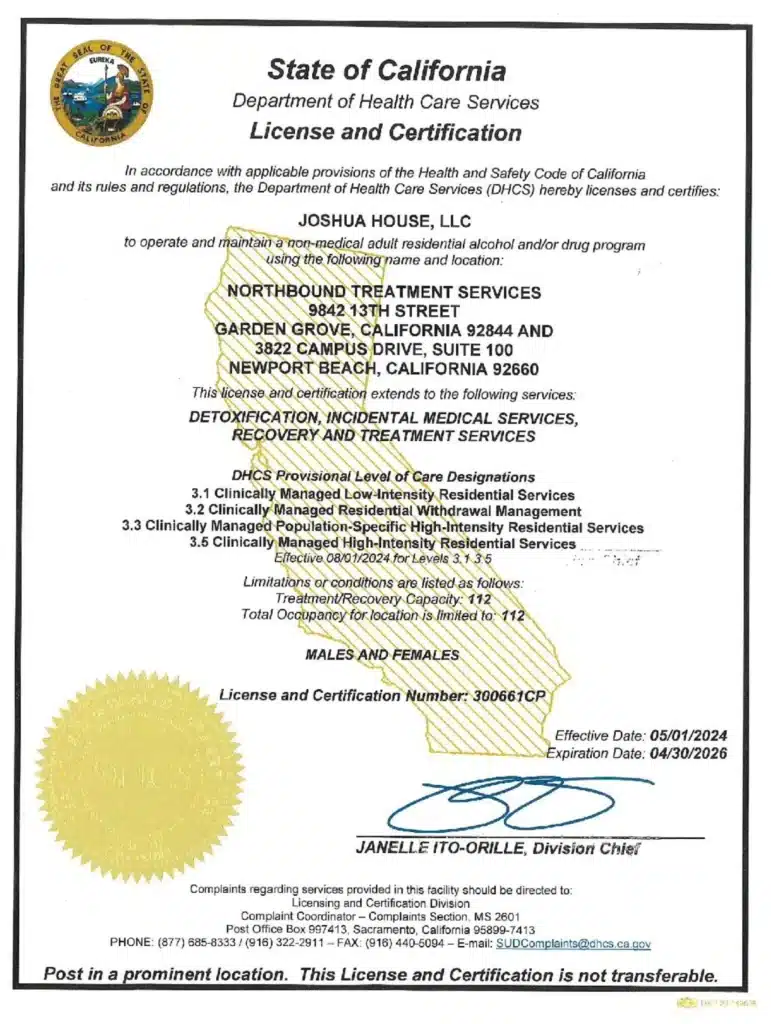The side effects of meth abuse vary from person to person. Meth is a stimulant, which typically causes a high energy, seemingly focused sense of being. Its euphoric effects allow a person to believe they are happier, smarter, and more engaging than ever before. The trick meth plays on the brain by disrupting the normal communication channels of dopamine release comes with a slew of side effects that are damaging to your physical, mental, and psychological health.
Meth abuse releases high levels of dopamine along your brain’s reward pathway. This tells the brain to repeat taking the drug to continue the pleasing effects. As the brain “asks” for more, it becomes tolerant of it and more is needed to feel the same pleasure as before. Over time, this leads to dependence and addiction as it begins to block or delete nerve transmissions to the brain, and the need for addiction treatment becomes more prevalent.
Other side effects of meth abuse may include rapid or irregular heartbeat, decreased appetite, increased wakefulness, decreased fatigue. Mostly, though, the side effects have to do with changes in thoughts and feelings. Chronic use leads to anxiety, confusion, insomnia, aggressiveness, and sometimes violent behavior. It may lead to paranoia, hallucinations, delusions, and other psychotic meth addiction symptoms.
Loved ones can often recognize addiction in those close to them through drastic behavioral changes. Being aware of these changes and their root cause can equip family and friends with the knowledge of when it might be best to turn to a rehabilitation center for support.
Side effects of meth abuse may result in curtailing responsibilities, experiencing problems at work or in relationships, and other personal problems. Often when meth abuse or addiction is present, one or more of the following will occur:
- Mood swings. High highs and low lows over a short period of time. If a person is energetic, talkative, and laser-focused one moment, but then anxious and depressed the following day, and follows this pattern for several days or weeks, it could be indicative of meth abuse side effects.
- Poor physical appearance. Rapid weight loss or sometimes weight gain, red eyes, and poor hygiene habits, particularly of the mouth, are all physical signs that meth abuse may be at play. In general, a person may not take as much pride in how they look or present themselves.
- Social isolation. Secrecy and aggressive, defensive behavior are both common signs of meth abuse. Friends and family members concerned about these new behaviors may cause a person to withdraw from them and seek new opportunities with those who also use drugs.
- Decline in work or at-home productivity. An increased lack of interest at work, school, or within personal relationships can be the start of concern for loved ones who are witnessing a change. Drug abuse decreases a person’s ability and desire to function well in any capacity.
On their own, each of these side effects may not be directly related to crystal meth abuse. However, it raises concerns for anyone who may suspect drug use is to blame as the catalyst. These types of changes in mood and behavior can lead to long-term damage not only to a person’s physical and mental wellness, but also to their livelihood and relationships.
The highly addictive nature of meth takes over every aspect of a person’s life whether they’ve reached the addiction stage or not. It may seem easy to abstain from using, but meth changes the chemical makeup of the brain. The rational decision-making that may have been accessible before is no longer a determining factor when drugs take over the mind’s communication efforts.
Addiction ruins lives. It causes a ripple effect to a point where soon there’s nothing left by addiction to fall back on. To stop the side effects of meth, detox is the only way to start a new, healthier pattern. It’s safest to go through this process under the care and supervision of a detox treatment facility.
Experiencing withdrawal symptoms and cravings alone often leads to relapse and possibly overdose as a way to compensate for temporary abstinence. Receiving meth addiction treatment and support through a medically managed treatment program provides a calm, secure environment to heal without temptation or other challenges causing distractions.
What to Expect During Meth Withdrawal
Meth withdrawal leads to strong cravings, in addition to physical and several psychological effects that take a toll on the body and mind. These often include difficulty sleeping, lack of energy, paranoia, depressed mood, all of which hit a peak of severity within the first several days. By staying in the same environment with regular access to meth, it doesn’t provide a conducive setting for healing.
Plus, feelings of depression can lead to suicidal thoughts, which should be monitored during this time. Trying to go through the withdrawal symptoms alone can result in dangerous behavior that can have lasting damage. The therapists and specialists available through a detox program provide assistance to help minimize withdrawal symptoms as much as possible. They are equipped to provide medical care as needed and emotional support to help get through the difficult stage of detox.
After approximately two weeks of abstinence, signs of meth withdrawal will disappear or occur with less frequency. Chronic users may feel these withdrawal symptoms at a lesser intensity for weeks or even months past the detox phase. Either way, it takes those first few weeks to detox the body fully of the drug in order to begin the next phases of care.
It’s difficult to say exactly what to expect from detox aside from the general symptoms and timeline. Each situation is different based on the history of substance abuse and if a person decides to detox at home or with the help of an addiction treatment facility. It depends on how the body reacts to the changes at any given time.
While the symptoms of meth abuse may subside, there are a few that may return and linger for longer than originally thought. The importance of medical monitoring will help minimize complications during detox and properly prepare for the next steps.
What Causes Meth Addiction?
A pattern of use is what leads to meth abuse, although it’s still dangerous even when using for the first time. Meth provides a high-energy burst that lasts for several hours. Chasing this high is what causes people to seek out more of the stimulant drug and continue to use. The euphoria varies in length based on how long it takes to metabolize it in the system. Factors like physical health, frequency of use, and the presence of co-disorders all make a difference in how the body and brain reacts.
In addition to wanting to achieve the temporary high, it’s common for people to use it as an escape from anxiety and depression. Ironically, coming down from the high of meth causes these feelings they’re trying to avoid to occur until the person starts using again. After meth has been processed fully, which takes approximately 24 hours for completion, the body immediately craves it again.
This dependency is what leads to addiction. Addiction means a person cannot and will not stop using the substance despite any physical or behavioral repercussions it has. The need is too great to recognize the damage it’s causing as a result.
Turning to Addiction Recovery Treatment for Help
The detox period is what stabilizes the body. No treatment can occur without it and the body can’t continue to function when addicted to meth. However, detox alone will not get to the root of the problem and eliminate it for good. That comes with therapy.
Therapy doesn’t provide guarantees of behavior. Rather it sets up a strong structure of accountability and support to provide the tools, strategies, and environment necessary for healing. Set within a serene setting, behavioral therapy is a large part of residential rehab. Being removed from the chaos, temptation, and negative influences of drug addiction is crucial to healing.
The recommended temporary stay is 90 days. With a dedicated care team, there will be a plan set in place customized per each person’s individual needs and goals. The idea is to eventually adjust independently back in real-life as a person experiencing sober living. This treatment includes intensive therapy, healthy physical and mental activities, education, and preparation for the future.
The beginning of treatment is as essential as the end, but the process itself cannot be rushed. It takes time to go through each phase with intention to thoroughly root out the problems that have been lingering for months. Safety and security are two of the most important things that an addiction recovery facility provides. Following residential rehab, the next phase of care is outpatient treatment and addiction support services.
When working together as part of a full continuum of care, addiction treatment helps to build a stronger future through sobriety. There is a clear pathway, but the way a person chooses to get there is personalized. It’s dependent on a person’s health and engagement with the program. Not everyone will move forward at the same pace and that’s perfectly normal. It takes time to resume to a balanced state and different factors may prolong this process.
Meth abuse is highly addictive and destructive, there’s no doubt about that. Recovery helps to rebuild something stronger. The side effects and withdrawal symptoms cannot be avoided. They can be eliminated altogether, though, with the guidance of a supportive care team and the availability of addiction treatment services. It’s the first step in this positive direction, away from addiction, that sets the path.
Source:
- “What Are the Immediate (Short-Term) Effects of Methamphetamine Misuse? | National Institute on Drug Abuse.” Drugabuse.gov. N.p., n.d., https://www.drugabuse.gov/publications/research-reports/methamphetamine/what-are-immediate-short-term-effects-methamphetamine-misuse
Author
-

President, CEO & Founder at Northbound Treatment Network
Paul Alexander is the CEO, President & Founder of Northbound Treatment Network in Newport Beach, California. He believes wholeheartedly in transformational leadership, organizational health and effective, fully integrated substance use disorder and mental health treatment. With over 27 years of experience in behavioral healthcare, Paul has extensive knowledge of “in vivo” treatment modalities, clinical development, operations, strategy, marketing and financial planning. He has been widely recognized for his development of collegiate-based residential treatment programs for students in recovery and authored a research study at The University of California confirming this modality’s effectiveness.
Paul’s comprehensive professional experience, willingness to innovate, and emphasis on organizational health are vital factors in Northbound’s continued success. Paul received his Certified Addiction Treatment Specialist training at Saddleback College in Mission Viejo, CA, and was awarded Outstanding Alumni Service Award in 2002. Paul holds a Bachelor of Arts degree in Criminology, Law and Society, Summa Cum Laude, from University of California, Irvine, and a Juris Doctorate degree from Loyola Law School of Los Angeles. Paul currently serves on The National Association of Addiction Treatment Providers (NAATP) board. In addition, he serves on The Family Recovery Foundation board and The CarePossible board in Orange County; both organizations are committed to raising funds for family recovery and treatment for former military personnel. Paul is in recovery himself and lives in Orange County with his wife Silvana and his two young sons, Noah and Dean.







